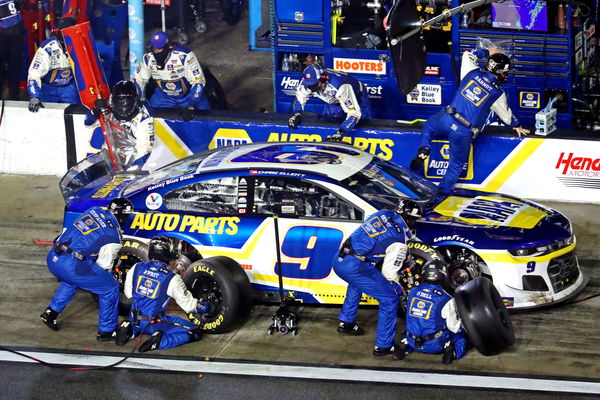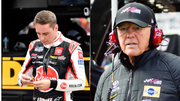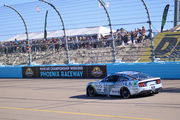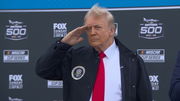
USA Today via Reuters
Daytona Beach, Florida, USA; NASCAR Cup Series driver Chase Elliott (9) makes a pit stop during the Daytona 500 at Daytona International Speedway. Mandatory Credit: Mark J. Rebilas-USA TODAY Sports

USA Today via Reuters
Daytona Beach, Florida, USA; NASCAR Cup Series driver Chase Elliott (9) makes a pit stop during the Daytona 500 at Daytona International Speedway. Mandatory Credit: Mark J. Rebilas-USA TODAY Sports
In 2022, the buzz around NASCAR’s Next Gen car was everywhere. Officials pushed it as the start of a new financial era. The pitch was simple: cost savings, new technology, and a more level playing field. Then-NASCAR president Steve Phelps promised it would make the sport more sustainable. Teams wouldn’t need to overspend on custom-built parts. Instead, they could focus on racing and attracting sponsors without going broke.
At the time, NASCAR’s financial model had deep cracks. Teams only received 25% of the TV revenue. Tracks took 65%, and NASCAR kept the remaining 10%. Meanwhile, team costs kept rising. Phelps said fans might not care about team profits, but they should—because broke teams can’t compete. His words seemed hopeful, even sincere. “We’re going to get to a good place with our race teams,” he said.
Fast forward to 2025, and that pitch now feels like a broken promise. The cars may look modern, but under the surface, the same old problems have grown worse. Rising costs, failing teams, sponsor exits, and a garage full of uncertainty. NASCAR’s insistence that the new era would lift all boats has turned into a spotlight on how few teams still float. The question now is blunt: Did NASCAR lie about not being top-heavy anymore? And is the sport mortgaging its future for short-term sponsor dollars? Let’s take a closer look.
ADVERTISEMENT
Article continues below this ad
Bleak Reality of NASCAR’s bold promises!
Owning a NASCAR team isn’t just expensive. It’s relentless. The charter alone costs $25–$40 million, just to guarantee a spot in every Cup Series race. That charter doesn’t cover travel, salaries, engineering, or the massive cost of maintaining and transporting a race-ready fleet. NASCAR said the Next Gen car would make this easier. In truth, it’s only moved the money around.
Last year, Justin Marks of Trackhouse Racing said it plainly. “What everybody didn’t quite anticipate is that the car did not reduce the cost to go racing. It just moved the cost centers.” Instead of fabricating parts, teams now spend on data, simulations, and tech. Sophisticated tools, engineers, and analytics are the new battlegrounds. And they don’t come cheap. Brad Keselowski added his voice, too.
He said RFK Racing, which he co-owns, is feeling the pressure. “We’re well-managed and we’re still losing money,” he explained. The standardized car didn’t stop the financial bleeding — it just redirected it. Costs in one area went down, but others, such as equipment, simulation, and staffing, surged. This isn’t just about operations—it’s about survival. Sponsorships, once the lifeblood of a NASCAR team, are drying up.

via Imago
July 17, 2023, Loudon, NH, United States of America: NASCAR, Motorsport, USA Cup Driver Brad Keselowski 6 and crew make a pit stop for the Crayon 301 at the New Hampshire Motor Speedway in Loudon NH. Loudon United States of America – ZUMAa161 20230717_zaa_a161_009 Copyright: xWalterxG.xArcexSr.x
Big-name sponsors like Mars (for Kyle Busch) and FedEx (for Denny Hamlin) have walked away. Even NASCAR couldn’t retain GEICO, and the outgoing Xfinity. Earlier this year, when Hamlin struggled to find an anchor sponsor, he admitted the truth, saying, “Sponsorship is hard to come by… dollars are not flowing like they used to.” What happens when sponsors pull out? Teams scramble. Kyle Busch, one of the sport’s all-time greats, found himself without a ride until Richard Childress Racing picked him up. That’s alarming. If Kyle Busch can’t guarantee sponsorship, what chance does a mid-pack or rookie driver have?
What’s your perspective on:
Did NASCAR's Next Gen car promise a revolution but deliver a financial nightmare instead?
Have an interesting take?
JGR, Hamlin’s team, now patches together sponsorship deals from Progressive, King’s Hawaiian, Sport Clips and others. None of them covers a full season. They’re plugging holes in the boat, not building a new ship. This sponsor-reliant model puts the future at risk. It leaves teams vulnerable and forces them to make short-term decisions to stay afloat. And when sponsors call the shots, innovation, risk-taking, and long-term planning go out the window.
Even the charter system—supposedly NASCAR’s solution to help teams gain financial security—is falling apart. The lawsuit between Legacy Motor Club and Rick Ware Racing is just one example. Legacy claims they bought a charter fair and square, but RWR is trying to back out, calling the deal off. We will keep this discussion for another day, but why did RWR try to sell a charter? According to Legacy’s court filing, the team claimed to be “strapped for cash.” And that’s not a one-off case.
In 2024, JD Motorsports filed for Chapter 11 bankruptcy. CHK Racing had to skip races. MBM Motorsports pulled out of Iowa. These aren’t isolated incidents—they’re symptoms of a bigger problem. The financial foundation of NASCAR has cracks. Teams now pay between $25- $40 million just to get a charter. That doesn’t include car development, salaries, travel, or tech. It’s a never-ending spending race. If a team doesn’t have a deep-pocketed owner or a blue-chip sponsor, they’re stuck. This isn’t a level playing field—it’s a wall that only a few can climb.
ADVERTISEMENT
Article continues below this ad
Trending
Is NASCAR selling its soul?
The Next-Gen car was supposed to save the sport. Instead, it’s shifted the cost burden and put more pressure on sponsors. Teams are spending more than ever just to keep pace. The sport is more tech-driven, more data-heavy, and more expensive. NASCAR may look sleeker now, but under the hood, the finances are overheating. From Truck to Xfinity and Cup top teams like Joe Gibbs Racing, Hendrick Motorsports and JR Motorsports dominate.
The small ones fall behind. The Xfinity and Truck Series are the biggest victims. According to Cup series champion Joe Logano even he needs to pay to get a drive in Xfinity or Truck series. This reflects to the sponsor heavy nature of the sport. NASCAR said it would fix the imbalance. It said it would reduce costs. But reality paints a different picture.
ADVERTISEMENT
Article continues below this ad
So yes, it’s fair to ask—did NASCAR lie about not being top-heavy anymore? Because right now, it looks like the sport is mortgaging its future for short-term sponsor dollars. The innovation is exciting. The technology is impressive. But if only a handful of teams can afford to survive, what’s the point? NASCAR still has time to fix this. But first, it needs to stop pretending the problem doesn’t exist.
ADVERTISEMENT
ADVERTISEMENT
ADVERTISEMENT
ADVERTISEMENT







Did NASCAR's Next Gen car promise a revolution but deliver a financial nightmare instead?